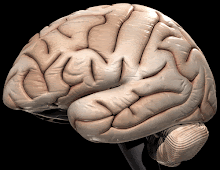To keep our torsos stable and conserve energy, we swing our arms backwards and forwards while walking. When you swing, say, your right leg forward to take a step, you provide a rotational moment about the central vertical axis of your torso. By the principle of conservation of angular momentum, an opposite reactionary moment is felt by your torso. By swinging your right arm backwards and your left arm forwards, you counterbalance this moment. Just try running without swinging your arms at all. Or worst still, try running while swinging your arms in the opposite directions to normal: that is: swing your left arm forward when you swing your left leg forward and so on. You will find that your torso rotates from side to side in an uncomfortable and unnatural manner.
Of course, legs are heavier than arms, so as to ensure that the moments are the same, evolution has ensured that our arms are further from the central axis of our bodies than our legs are. This allows the moments from our legs and our arms to be roughly equal.
Of course, legs are heavier than arms, so as to ensure that the moments are the same, evolution has ensured that our arms are further from the central axis of our bodies than our legs are. This allows the moments from our legs and our arms to be roughly equal.
Two-legged walking animals balance themselves by synchronising the movement of the backbone to the side of the leg that stays in contact with the ground. This keeps their gravitational centre close to the standing leg. It is seen in chicken and, to better effect, in penguins.
